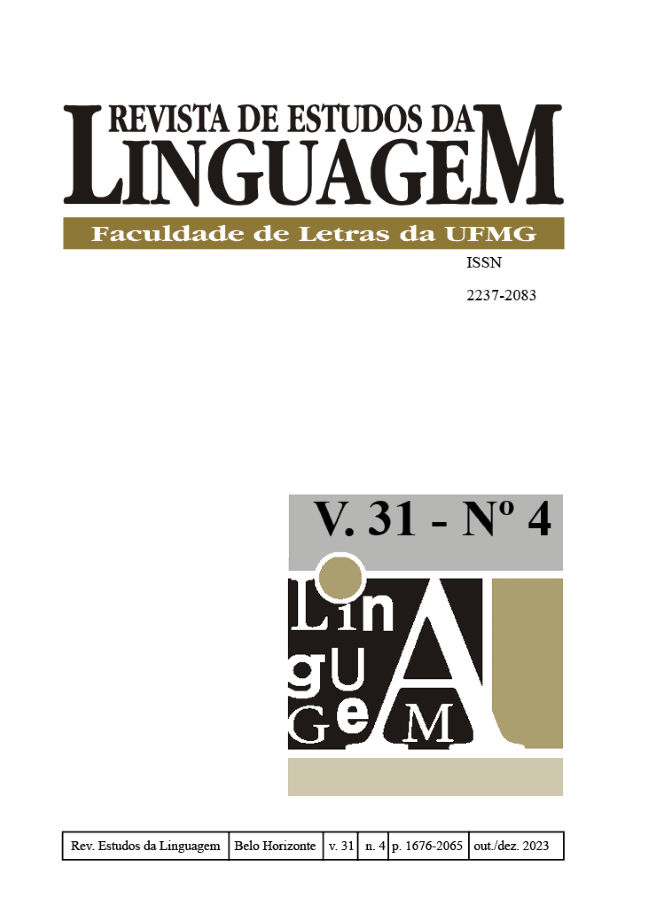The Digital Platform “Kahoot” in the Brazilian Basic Education
Multiliteracies in English – Diversity and Multimodality in a Gamified Environment
DOI:
https://doi.org/10.17851/2237-2083.31.4.1866-1890Keywords:
multiliteracies, multimodality, digital learning environmentAbstract
This article conceives that learning English is essential in the Brazilian Basic Education where multiliteracies, in a decolonial and emancipatory perspective, can be developed in favor of full citizenship. For this, teachers need to tune their pedagogical practices to the demands of today’s society, where the two aspects, multimodality and diversity, are intertwined in the process of educating students, called the “P” generation (for participatory). Knowledge in this additional language needs to be decolonized to include topics of social relevance that incite debates and the development of critical awareness in the pursuit of transformative and emancipatory learning. The homepage and some activities of the Kahoot gamified digital environment were chosen for a critical-interpretative documental analysis, to investigate how they contribute to a contemporary pedagogy in line with the changes arising from digital technologies, as our theoretical framework reveals. Our analysis shows that the various alternatives present in Kahoot for the development of knowledge in English, pari passu with the possibilities of including the two aspects of multiliteracies and gamification, can contribute to students’ agency and transformative role in learning, being autonomous, capable of playing and winning in the process of improving communication in English in the everyday social practices through language.
Downloads
References
ALMEIDA, R. Movimentos decoloniais nas aulas de língua inglesa: uma proposta de percurso didático sobre o “Dia do Índio”. Revista Humanidades e Inovação. Palmas, v. 9, n. 9, p. 127-142, 2022.
BRASIL. Ministério da Educação. Base Nacional Comum Curricular. 2018. Disponível em: <http://basenacionalcomum.mec.gov.br/>. Acesso em: 10 de jul. 2024.
CARRIÓ-PASTOR, M. L; BELLÉS-FORTUÑO, B. Teaching Language and Content in Multicultural and Multilingual Classrooms CLIL and EMI Approaches. Language Value. Switzerland, v. 14, n. 2, p. 132-136, 2021. DOI: https://doi.org/10.6035/languagev.6191
CRYSTAL, D. Language and the Internet. 2. ed. Cambridge: Cambridge University Press, 2006.
DIAS, R. Multimodalidade e multiletramento: novas identidades para os textos, novas formas de ensinar inglês. In: SILVA, K. A. da.; ARAÚJO, J. (orgs.). Letramentos, discursos midiáticos e identidades: novas perspectivas. Pontes Editora, 2015, p. 305-325.
DIAS, R. Entrevista. Polifonia, Cuiabá-MT, v. 25, n. 37.1, p. 160-170, 2018.
FREIRE, P. Pedagogia do oprimido. 17. ed. Rio de Janeiro: Paz e Terra, 1987.
GEE, J. P. What video games have to teach us about learning and literacy. 2ed. Palgrave Macmillan, 2014.
GUALBERTO, C. L.; SANTOS, Z. B. dos. Multimodalidade no contexto brasileiro: um estado de arte. D.E.L.T.A., v. 35, n. 2, p.1-30, 2019. DOI: http://dx.doi.org/10.1590/1678-460X2019
HODGE, R; KRESS, G. Social Semiotics. 1. ed. New York: Cornell University Press, 1988.
KALANTZIS, M.; COPE, B.; PINHEIRO, P. Letramentos. Trad. Petrilson Pinheiro. Campinas, SP: Editora da Unicamp, 2020.
KRESS, G. Multimodality: a social semiotic approach to contemporary communication. London/NV: Routledge, 2010.
KRESS, G. Literacy in the New Media Age. London: Routledge, 2003.
MARCONI, M. A. de; LAKATOS, E. M. Fundamentos da Metodologia Científica. 8. ed. São Paulo: Atlas, 2017.
PRENSKY, M. Teaching digital natives: partnering for real learning. 1. ed. Corwin, 2010.
THE NEW LONDON GROUP MANIFESTO. A pedagogy of multiliteracies: designing social futures. vol. 66. Spring: Havard Educational Review, 1996.




 Esta obra está licenciada com uma Licença
Esta obra está licenciada com uma Licença 